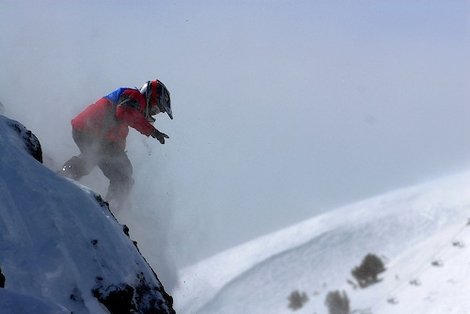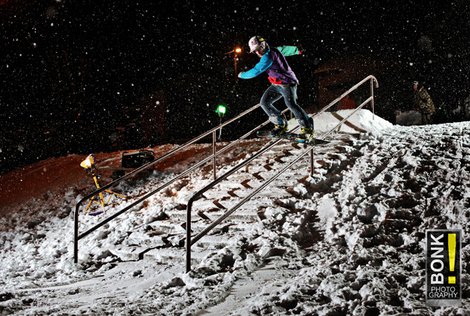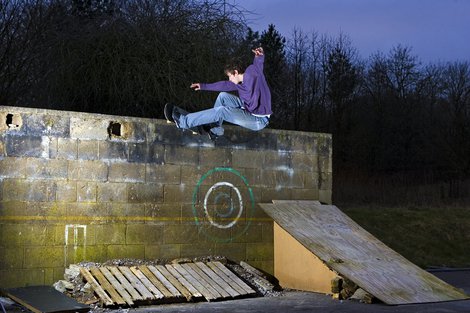Here's part 2 of my A - Z of snowboard tricks
Fakie
The short definition
of a fakie would be riding the snowboard backwards from the way you would
normally ride it. A fakie is usually used in conjunction with another trick.

There is no real proof who invented, or was the first to do a fakie, but Nate
Sherwood takes credit for it. The fakie may not be the best name for this
trick, but it isn't as easy as it looks and many more difficult stunts are done
with a fakie.
The next time you are watching some pros, pay attention to when you might see a
fakie.
Freeriding - A Basic
Definition
Freeriding was
developed in the early days of snowboarding to satisfy the urge that some
snowboarders had for a more challenging course that had a larger variety of
obstacles. the original idea being that there should be no course, no rules, or
goals to be determined.

Also referred to as "backcountry", or "extreme"
snowboarding, this is the essence of every snowboarding event today. In
freeriding, any natural obstacle or feature that lays in the area to be ridden
in is subject to use as a jumping, or trick platform. Many tricks, and stunts
in other styles of snowboarding such as halfpipe, big air, freestyle, and many
others, were developed originally as a freeriding stunts.
To be a master in snowboard freeriding one must be very good in all the other
areas of snowboarding, and the equipment reflects this, in that it is versatile
enough to be used on any terrain, or in any situation.
Freestyle
Snowboarding
There are many
styles and types of snowboarding in existence today, this will help to define
freestyle snowboarding for those who are confused.
In freestyle snowboarding, natural and man-made objects are used as a base to
perform tricks. There are "boxes" made from polyethylene plastics
that the rider can slide on with minimal damage to the bottom of his or her
snowboard. Rails, jumps, trees, or whatever features are available, or any
immobile object can be incorporated into freestyle snowboarding.

The object of the sport being to use all available features to perform aerial,
and jib stunts. Jib refers to the stunts performed by doing a press, or slide
on a feature not covered in snow. Generally this describes the tricks done
using man-made objects. trees, and other natural features without any covering
of snow. Equipment used by freestyle snowboarders differs from other equipment
in the fact that the board is twin tipped, the board edges are filed down, and
boards are shorter.
Grind
In snowboarding a
grind is essentially the same as in skateboarding, but the skateboard has
trucks attached to the bottom of the board, and a snowboard doesn't. This is a
jib maneuver, and is sometimes referred to as a slide.
This is a particularly difficult and dangerous trick, so other skills, such as
ollies, must be mastered first. Any jib can be used for this trick, but
generally a rail, or a downed tree is used. There are a lot of variations to
this also, if the riders skills are up to the specific variation being
attempted.

In essence a grind is sliding the board on top of an object that isn't snow.
The boarder will ollie, or pop, their board on top of the item, and slide the
board along it, then ollie, a smaller one, to dismount and ride away. It is
highly recommended that when learning this trick the rider use a very short
rail, or a downed small tree, or log.
Half cab
The half cab is
adapted from a Caballerial, which is of course named after Steve Caballero, a
15 year old kid who started skating for Powell-Peralta in 1978 and still does
today. The Caballerial was originally a vert trick, but has been adapted to a
flat trick, and that’s where the half cab comes in. It is basically a 180
degree rotation to forward from fakie off of a regular jump.
Approach the jump as you normally would, but riding fakie. Compress down, but
when you squat down, rotate your upper body opposite to the direction you want
to turn. Be careful to go not turn your board. As you go off the jump, bring your
front foot up, gaining a bit of air, unwind your body like a spring and
continue turning in the direction you want to go, bringing your board around
180 degrees. Make sure to land carefully, and ride away.

Comments